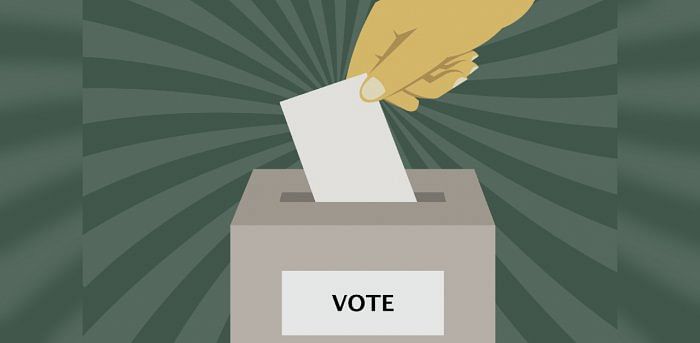
With the Rajya Sabha elections nearing, political parties have started to put forward various candidates. The elections are set to take place on June 10 for 57 seats that will fall vacant due to the retirement of members between June and August. Forty-one members have already been elected unopposed, leaving 16 seats to be decided.
While Lok Sabha members are elected by direct voting, i.e., by the voters during General Elections, the voting in the Rajya Sabha follows a different pattern.
Who can vote?
The Rajya Sabha has an indirect election with only elected members of state legislative assemblies taking part in the voting process. It is carried out through a single transferable vote and is based on the principle of proportional representation. In simple words, to keep the majority party from holding a monopoly in the Upper House, a bloc of MPs of one or more parties can elect members of their choice and send them to the Rajya Sabha, provided they have the requisite numbers.
The process
Rajya Sabha voting is a little complex. The process is initiated only if the number of vacancies is less than the total number of candidates who are participating in the election. It is relatively easy to predict the number of seats that a party will win in the RS polls as the Assembly strength of each party is already known. For example, if the ruling party and its allies are in command of 60% of the total seats and the RS polls are to be contested on 10 seats, the ruling party would secure six while the Opposition would bag four seats.
The principle of a single transferable vote allows voters to choose any number of candidates in order of preference. The candidate contesting the polls needs to secure a specified number of first preference votes to win the elections, which depends on the number of voters. In the first round of polls, the value of each first preference vote is valued at 100 points and the candidate needs to secure one point more than the quotient obtained by dividing the total number of MLAs voting by the number of seats on which the election is contested plus one. For instance, if there are 220 MLAs voting and elections are being contested on 10 seats, then a candidate needs to ensure 220/(10+1) = 22 votes or 2200 value points.
While results are mostly clear after the first round of voting, the process might enter round two if candidates fail to clear the specified number. Once a member is selected, the surplus votes in his or her list are transferred to the subsequent member’s kitty following the preference list order, with a decreased value.
The voting is carried out through an open ballot system, unlike the Lok Sabha polls. This is done to prevent corruption-induced cross-voting and the MLAs need to show their votes to an authorised agent appointed by the party. Additionally, there is no NOTA option in the RS elections.
As of now, the Constitution permits a maximum of 250 members in the Upper House out of which 238 are elected by a system of single transferable votes, while 12 members are nominated by the President from different spheres like music, sports, economics and others.
RS members enjoy a six-year term and two-thirds of the total members retire every two years.